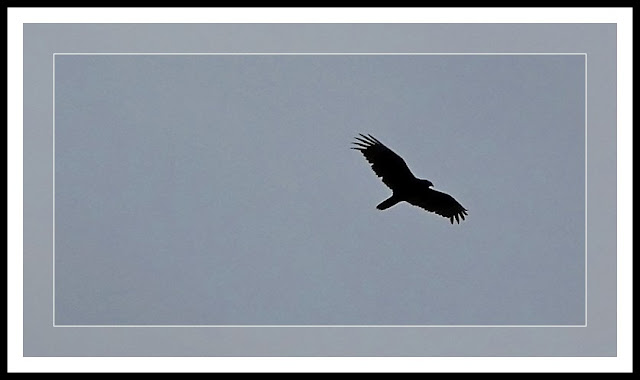{Click on an image to enlarge, then use the back button to return to this page}
This page last updated on 06/19/2017
 |
| (Fig. 01) |
Picture Notes: On the way home from a visit to the Techatticup Mining Camp in Eldorado Valley, we spotted a turkey vulture sitting on a cliff on the side of the road (Fig. 01). We got out and walked back to get some pictures. Finally he flew off the cliff and began to circle the area (Figs 02 & 03). It took us a while but eventually we finally figured out what he was after. There was a dead rattle snake in the middle of the road that had been run over by a car (Fig. 04).
 |
| (Fig. 02) |
Description: The turkey vulture (Cathartes aura), also known in some North American regions as the turkey buzzard (or just buzzard). It is a large, predominantly blackish-brown bird. It is most commonly seen soaring overhead. The Turkey Vulture has a 5- to 6-foot wingspan and soars with its wings tilted up, in a dihedral pattern. Turkey Vultures rock back and forth when soaring. Vultures are unmistakable, with their featherless, red heads. Their habitat is open country, woods, deserts, foothills. Most common over open or semi-open country, especially within a few miles of rocky or wooded areas providing secure nesting sites. Generally avoids densely forested regions. The turkey vulture is a scavenger and feeds almost exclusively on carrion. It finds its food using its keen eyes and sense of smell, flying low enough to detect the gases produced by the beginnings of the process of decay in dead animals.
 |
| (Fig. 03) |
 |
| (Fig. 04 |
Go back to ... Techatticup Mining Camp - Trip Notes for 05/27/2017
.
